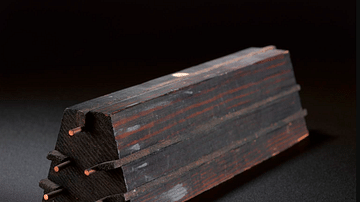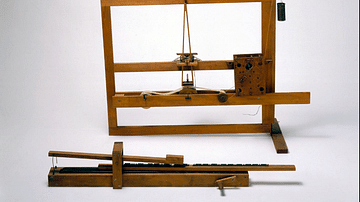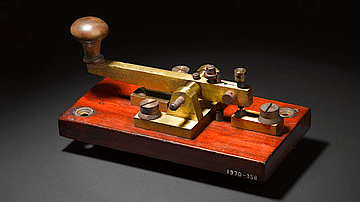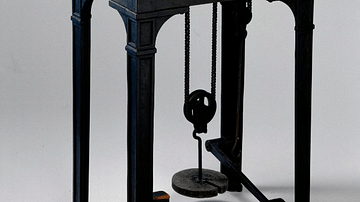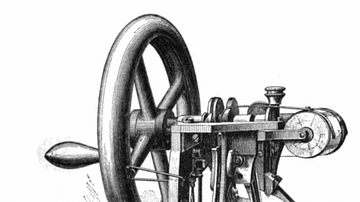Illustration
The first telegraph machine, invented in 1837 by William Fothergill Cook (1806-79) and Charles Wheatstone (1802-1875). The machine had only 20 letters, indicated in the message sent by the slight movement of two needles (from the machine’s set of five) towards a particular letter. The needles were moved by electrical impulses sent down the telegraph line connecting two machines. The telegraph was first used for messages for workers on railway lines but the idea soon caught on and people could eventually send private telegrams across continents.
Science Museum, London.
Cite This Work
APA Style
London, S. M. (2023, March 20). The First Telegraph Machine. World History Encyclopedia. Retrieved from https://www.worldhistory.org/image/17209/the-first-telegraph-machine/
Chicago Style
London, Science Museum,. "The First Telegraph Machine." World History Encyclopedia. Last modified March 20, 2023. https://www.worldhistory.org/image/17209/the-first-telegraph-machine/.
MLA Style
London, Science Museum,. "The First Telegraph Machine." World History Encyclopedia. World History Encyclopedia, 20 Mar 2023, https://www.worldhistory.org/image/17209/the-first-telegraph-machine/. Web. 07 May 2025.

